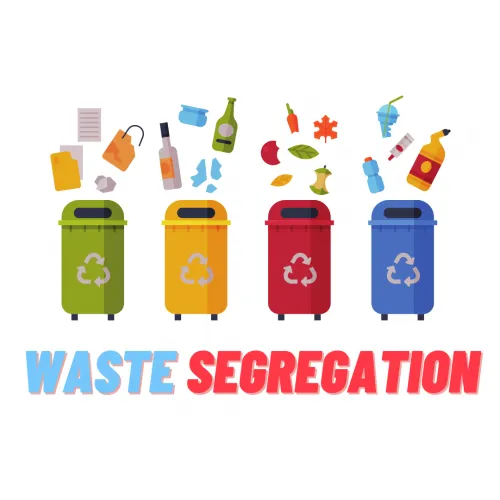What is waste management and why is it important?
Waste management is one of the most crucial problems our country is facing right now. India produces 62 million tonnes of waste each year. When we segregate waste, there is not only a reduction of waste that gets landfilled, it also reduces pollution levels by lowering the percentage of garbage exposed to air and water. WM is important because it reduces the effect of pollution on the environment and nature. It can also help reduce or reuse the waste materials that are harmful for the environment such as plastic, glass, Styrofoam, thermocol, etc. and many more.
What is dry waste and wet waste?
Dry Waste:
What is dry waste?
Dry waste consists of waste that does not decay. It is also known as waste which cannot be biodegradable. Dry waste consists of paper, glass, thermocol, Styrofoam, rubber, metal, cloth, empty bottles, stationeries, etc. and can be recycled into new products further. Before segregating, sharp materials like glass and other metals shall be kept in a separate bag/container.
How dry waste is to be disposed?
Dry waste is the kind of waste which is not biodegradable. Hence wet waste can be converted and recycled into new products and reused further.
Wet Waste:
What is wet waste?
Wet waste is all the kitchen waste that we produce. Eg: vegetable peels, used tea bags, fruits, leftovers, coconut shells, flowers, leaves, meat or nonveg, expired food items, bread, biscuits, etc.
How wet waste is to be disposed?
This is organic waste which can be recycled and converted into compost. Most of the wet waste comes from the kitchen itself. Restaurants, buildings and factories need efficient wet waste management systems.

Why is waste segregation necessary?
By segregating dry waste such as plastic, glass, metals, paper, etc. from wet waste it becomes easier to recycle them into new products. Whereas wet waste like vegetable leftovers, fruits, used tea bags etc. can be used for producing gas.
Proper WM is necessary because, it will help in reducing;
- Greenhouse gas emission
- Toxic gas explosions
- Waste Landfill
- Air, soil and water pollution, etc.
Segregation of waste at home:
Segregation of dry waste and wet waste can be done from home. This habit will reduce the burden of the municipal authorities to segregate the waste. To get started with it, you just need some awareness and the desire to act towards this.
You need to keep these following things in mind before segregating waste at home:
- Keep 2 separate dustbins for dry and wet waste
- Remove any covering on the kitchen waste before throwing it in the dustbin
- Do not mix wet waste with dry waste
- Keep the plastic from the kitchen dry and separate in the dry bin
- Keep the dry waste rinsed of any food content before throwing in dry bin
- Throw the sanitary waste in a separate paper bag
What is Waste Segregation?
Waste segregation is the process of separating different types of waste materials in order to make it easier to recycle, compost, or dispose of them properly. This process is an important step in reducing the amount of waste that ends up in landfills and promoting a more sustainable environment.
Segregation at the individual and community level
Segregating waste can be done at the individual level, such as separating recyclables from other trash in your own home, or at the community level, through programs that collect different types of waste at the curb. Many cities and towns have curbside pickup programs for recycling and composting, and residents are often provided with separate bins for different types of waste.
Benefits of Waste Segregation
By segregating waste, we can reduce the amount of waste that ends up in landfills, conserve resources, and reduce greenhouse gas emissions. It also makes it easier for WM companies to recycle and compost materials, rather than having to sort through mixed waste.
Overall, the segregation of waste is an important step in promoting a more sustainable environment and reducing the impact of waste on our planet. By separating different types of waste, we can make it easier to recycle and compost materials and reduce the amount of waste that ends up in landfills.
Conclusion: wet garbage and dry garbage
Wet waste and Dry waste segregation are necessary for every individual because they will help us keep our environment pollution free and also keep the environment healthy. These segregated wastes can be reused and especially plastic waste can be recycled into new products and plastic granules.
Click here for more information on Plastic Recycled Products, Waste Management, and CPCB EPR Certificate.

